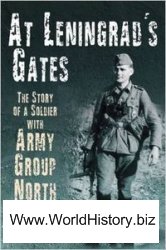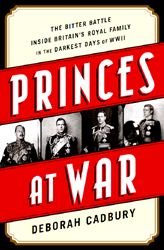Offensive, and also, with the potent high-velocity guns now carried, as the key anti-armour weapon system in defence. To ensure its optimum deployment, a large family of supporting armour had been developed; this included self-propelled artillery, also armoured recovery vehicles capable of salvaging damaged mbts on the actual battlefield. Special combat engineering vehicles were adapted from the tank chassis, including the Armoured Vehicle Royal Engineers (avre) based on the British “Churchill” tank body, carrying a heavy demolition mortar or Petard for the reduction of enemy fieldworks. There were other variants, widely known as “Funnies”, developed by Maj Gen Hobart for his specialist 79th Armoured Division, tasked with breaching the German West Wall defences on the French coast. These included swimming tanks to lead the assault up the beaches, flamethrowers (“Crocodiles”), bridge and tracklayers, and flail tanks (“Crabs”) for the detonation of minefields. Specialist vehicles continue to be an essential ingredient of all armoured forces and it is accepted that infantry working in conjunction with tanks now require fully protected vehicles capable of armed action when required. Thus the armoured personnel carrier (arc) has become the Mechanized Infantry Combat Vehicle (micv).
The tank designer has to reconcile factors of mobility, fire power and protection; emphasis on these differs from nation to nation. High mobility and fire power have always been prime considerations for German and Russian designers but American and British tank design places a high premium on protection. The 63-ton British Challenger carries heavy armour protection for its four-man crew and mounts a 120mm gun. Israel’s Merkava, designed for operations in the exposed conditions of the desert, is also heavily armoured, but for additional close protection carries a subsection of infantry within its 61-ton hull. The German Leopard is less heavily armoured but, like comparable Soviet tanks, has a power-to-weight ratio permitting good acceleration and high road and cross-country speeds.
There has been a move away from the rifled gun as the tank’s main armament. At present, only Britain appears to favour it and it will be carried by the improved Challenger which is to be the Royal Armoured Corps’ future MET. High-pressure smoothbore guns firing Armour Piercing Fin Stabilized Discarding Sabot (apfsds) ammunition have been adopted by all other major powers. Fire control systems, computerized and capable of feeding in all required data necessary to give maximum chance of a first-round hit, are now essential, as are laser rangefinders and high-definition night vision equipment. These systems permit rapid engagement of successive targets and greatly relieve the crew workload in the 24-hour battle. Developments in power plants have resulted in higher power output for reduced bulk and a shift towards turbodiesel engines. However, the American Ml Abrams met is powered by a gas turbine, whose compactness must be balanced against greatly increased fuel consumption and thus larger tankage under armour.
Developments in metallurgy have contributed to increased protection available to tank crews. One counter to the increasingly effective chemical energy (ce) warheads fitted to modern anti-tank guided weapons (atgw) is the fitting of Explosive Reactive Armour (era) consisting of slabs of explosive which, detonating when hit by a ce warhead, diffuse the effect of the hit and prevent penetration of the main armour. Various forms of compound armour have also been developed against attack by Kinetic Energy (ke) ammunition. Although gun design has probably neared the limit of development, there is scope for improved ce warheads and fin-stabilized ke rounds fired from smoothbore high pressure tank guns.
The higher acceleration and running speeds of the newer tanks impose greater demands on their tracks and suspensions, and these too need to be developed to match the demands placed on them.
Future tanks could be markedly different in appearance if it is decided to do away with the turret and adopt the type of configuration already seen on the Swedish “S
Tank” of the 1960s, whose low silhouette and three-man crew (as in current Soviet designs, using an autoloader) greatly reduces the target area whilst permitting a higher power-to-weight ratio and increased mobility both on and off the battlefield. There is evidence to show that the Russian T-80 Successor tank is turretless and mounts an extremely potent 135mm high-pressure gun. If so, it poses a serious threat to the present generation of nato tanks. MH.
Tannenberg and the Masurian Lakes, Battles of (1914). Plans had long existed in Berlin and St Petersburg for the inevitable conflict between the Central Powers and Russia and France. Field Marshal von Moltke’s concept of 1890 was to deal first with the Russian threat to East Prussia, holding the French on the Western Front until the full weight of the German war machine could be switched from the East, using the highly developed railway system carefully laid out with such strategic use in view. In 1891 the plan was recast by Schlieffen, the new German Chief of General Staff. On the assumption that Russian mobilization would take six weeks or more, he allotted only one army to cover the East whilst the master stroke was delivered against France. The armies would then be switched to defend East Prussia. Moltke’s nephew, succeeding Schlieffen in 1906, assigned Prittwitz’s Eighth Army to this task in 1914.




 World History
World History









